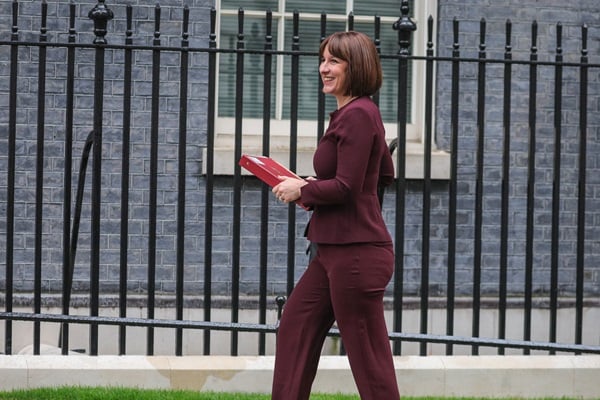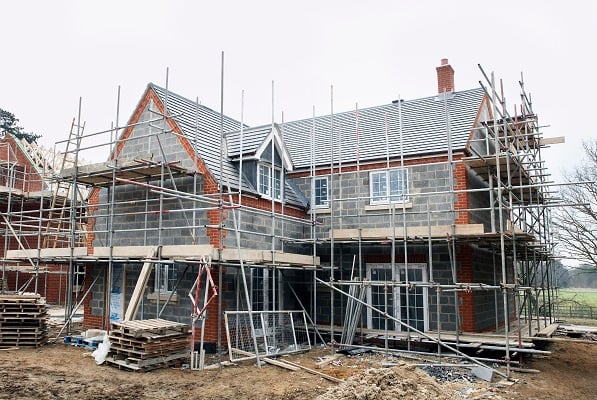Building maintenance expert Mainmark UK is urging the Government to consider careful planning and community engagement to better educate the public on subsidence risk.
This comes as Chancellor Rachel Reeves reaffirms the Government’s commitment to build 1.5 million new homes over the next five years.
Standing at a podium at Siemens Healthineers in Oxfordshire, Chancellor Rachel Reeves outlined Labour’s plans for investment in various aspects on British infrastructure (Wednesday, 29 January 2025).
Among the ambitious proposals, which include investments in airports and key roads, is a pledge to build over a million new homes, mostly on areas of “grey belt” land.
Grey belt land is land that has previously been developed for commercial or industrial purposes, which has since become derelict. In England alone, this could equate to more than 46K hectares of disused land.
While schemes to boost our housing infrastructure are necessary to enable economic growth, protecting green belt areas – land which contains forestry, natural habitats and open space – where possible, adequate discussions and education on the viability of soil in grey belt areas is urgently needed.
This is so that homeowners are fully aware of the risks of subsidence – where the ground beneath a property sinks – and can mitigate any threats as early as possible.
Freya Chapman, Residential Lead at Mainmark UK, said: “If grey belt land is the only option for new builds, I’d encourage Government officials to liaise closely with those in the industry – housing developers, architects, arborists, geologists and subsidence experts. By fostering discussion on geotechnical issues, we can educate, collaborate and enable economic growth.
“The soil quality of grey belt land is generally poor. Because they are usually areas that have been previously developed for commercial or industrial purposes, the soil is often degraded by past overuse or even contaminated by industrial waste. This poses the question, is this land viable for new homes?
“One of the most common causes of subsidence is poor drainage in the foundations of a home, which is characteristic of grey belt areas. When water pools around a property, it makes the soil much less compact and prone to movement when it dries.
“The water washes out the fines from the foundations and creates micro-voids. These voids become larger over time and then the structure moves downwards into the voided area and can greatly impact the safety and structure of a home.
“In principle, I completely understand what the Government is trying to achieve by proposing the building of new homes in these areas, which will otherwise lie derelict and disused. The environment is also a huge consideration for any development project and, at a time when maintaining our natural landscapes and habitats must be a priority, building on green belt land is simply not an option.
“What I would like to see is investment in research and development – testing soil quality, funding to further geological survey technologies and more education for homeowners and housing associations on mitigating subsidence risks as much as possible.
“It would also be great to see efforts directed to the refurbishment of existing buildings, which otherwise remain derelict and disused. Regeneration should be a priority for residential and commercial developers, and the risk of subsidence in the foundations of these buildings (generally built to a good quality) is lower than new builds. We have tens of thousands of voided properties in the U.K, the carbon footprint to regenerate existing structure’s is much lower than building new dwellings.
“Furthermore, if the strengthening of the foundations under pre-existing housing estates (which are generally built to a good quality) can be made more accessible to homeowners, the treatment of subsidence becomes quick, non-disruptive and cost-effective.”
Insurance Business America once reported that more than half (51 per cent) of homeowners may not be able to identify subsidence in their properties. As the UK is already amid a housing crisis, local authorities can’t afford to see surges in subsidence make new builds unhabitable.
Mainmark UK, part of the Mainmark group of companies, was established in the UK in 2015. Hitting its milestone tenth anniversary this year, the company is aiming to further its innovative and efficient solutions to a wide array of ground engineering challenges, with Freya at the helm of its residential offering.
As one of the only female subsidence experts in Europe, Freya hopes to establish harmony between the built and natural environments, exploring new and creative ways to solve subsidence as sustainably as possible.






Leave a Comment